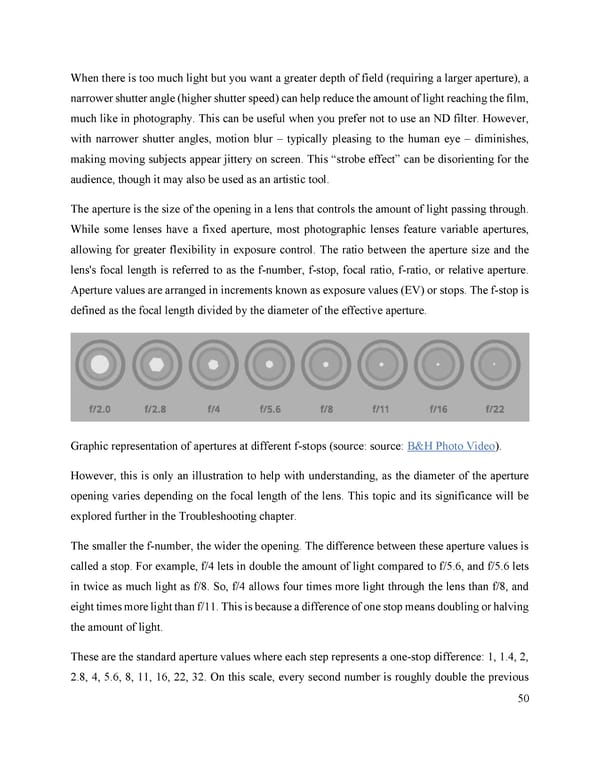When there is too much light but you want a greater depth of field (requiring a larger aperture), a narrower shutter angle (higher shutter speed) can help reduce the amount of light reaching the film, much like in photography. This can be useful when you prefer not to use an ND filter. However, with narrower shutter angles, motion blur – typically pleasing to the human eye – diminishes, making moving subjects appear jittery on screen. This “strobe effect” can be disorienting for the audience, though it may also be used as an artistic tool. The aperture is the size of the opening in a lens that controls the amount of light passing through. While some lenses have a fixed aperture, most photographic lenses feature variable apertures, allowing for greater flexibility in exposure control. The ratio between the aperture size and the lens's focal length is referred to as the f-number, f-stop, focal ratio, f-ratio, or relative aperture. Aperture values are arranged in increments known as exposure values (EV) or stops. The f-stop is defined as the focal length divided by the diameter of the effective aperture. Graphic representation of apertures at different f-stops (source: source: B&H Photo Video). However, this is only an illustration to help with understanding, as the diameter of the aperture opening varies depending on the focal length of the lens. This topic and its significance will be explored further in the Troubleshooting chapter. The smaller the f-number, the wider the opening. The difference between these aperture values is called a stop. For example, f/4 lets in double the amount of light compared to f/5.6, and f/5.6 lets in twice as much light as f/8. So, f/4 allows four times more light through the lens than f/8, and eight times more light than f/11. This is because a difference of one stop means doubling or halving the amount of light. These are the standard aperture values where each step represents a one-stop difference: 1, 1.4, 2, 2.8, 4, 5.6, 8, 11, 16, 22, 32. On this scale, every second number is roughly double the previous 50
 Lost Analogue: Exploring Film, Music, and Interdisciplinary Methods in Education Page 50 Page 52
Lost Analogue: Exploring Film, Music, and Interdisciplinary Methods in Education Page 50 Page 52